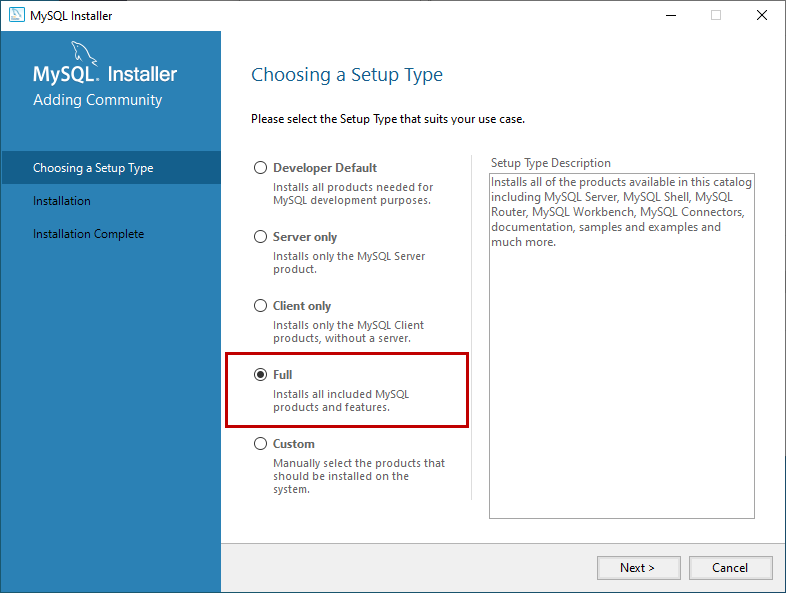

Similarly, for the MySQL Server Port, we enter the port number that we use to connect to the database.ĩ. For MySQL Hostname, we enter the database endpoint name.Ĩ. pem file used to connect from the file system.ħ. And for SSH Username, we enter the default SSH user name to connect to the EC2 instance.Ħ. After that, for SSH Hostname, we enter the public IP address of the EC2 instance.ĥ. Here we can select the Connection Method and Standard TCP/IP over SSH.Ĥ. Then we select MySQL New Connection and enter a connection name.ģ. Initially, we open the MySQL Workbench.Ģ. Moving ahead, let us see how our Support Techs perform this query.ġ. In addition, we need to confirm that the EC2 instance can connect to the internet using its public IP address from the local machine. Prior to connecting, we need to configure the security group inbound rules, network ACLs, and route tables to allow a connection between the EC2 instance and the RDS DB instance. Here, at Bobcares, we assist our customers with several AWS queries as part of our AWS Support Services. Your database is ready to use.Recently, one of our customers wanted to connect MySQL Workbench to EC2 Instance. The form editor is just as easy to use you only need to remember to click the Next Entry button (single right-pointing arrow) to move to the next data row ( Figure F), before entering new data.Ĭongratulations, you successfully created a database, added a table, and entered data into the table.

Once you add all of your data, click Apply to execute the SQL Script. Double-click under that newly created row and create another.

After entering the necessary data, hit Enter on your keyboard. Double-click the first entry in one of your columns and type the data to be added. For the fastest route to success, use the result grid (which is the default). In this window, you can either use the result grid or open the form editor. You will then find yourself in a window that allows you to enter data ( Figure E). In order to start adding data to a table, right-click the table (in the SCHEMAS pane) to be modified and click Select Rows. In previous incarnations of MySQL Workbench, a button could be found on the home screen that took you directly to the table data entry section. It’s now time to populate that table with some data. Once you do that, you can then select the Datatype for the column ( Figure D).Ĭontinue adding columns until your table is complete. In the new window ( Figure C), name the table.ĭouble-click under Column Name, and you should be able to type the name of the first column. Expand that listing, right-click the Tables entry, and select Create Table. I’ve created a database called SERVERS, that will be listed in the SCHEMAS pane. Once the schema is created, close the SQL Script window. Once you name your schema, click the Apply button and, when prompted, review the SQL Script and click Apply again. In the resulting window ( Figure B), give the schema (database) a name and (if necessary) select a Default Collation. From the database home screen ( Figure A), right-click a blank spot under the SCHEMAS pane and select Create Schema. Open MySQL Workbench and connect to your database server. The first thing to do is create a database (aka Schema). I will assume you already have MySQL Workbench installed.
#BEST LOCAL MYSQL DATABASE WORKBENCH HOW TO#
You need to make sure you have MySQL set up for remote connections ( See: How to set up MySQL for remote access on Ubuntu Server 16.04 (This also works for Ubuntu 18.04). My instance of MySQL Workbench will connect to a MySQL database, housed on Ubuntu Server 18.04. I’ll use MySQL Working 6.3, which has drastically evolved from older versions of the tool.
#BEST LOCAL MYSQL DATABASE WORKBENCH PRO#
SEE: Server deployment/migration checklist (Tech Pro Research) What you need To do so, I’ll walk you through the process of creating a database, adding a table to that database, and then adding data to the table. I’m going to show you just how easy it is to make use of MySQL Workbench. Networking: Must-read coverageĥ programming languages network architects should learn (free PDF)īehind the scenes: A day in the life of a database administratorĢ0 steps to decommission a redundant data center facilityġ7 Terminal commands every user should know It’s cross-platform, open source, and incredibly easy to use. This particular tool is one of the finest locally installed MySQL client tools you’ll find. Fortunately, for those users, there are plenty of GUIs available to make the task easier. To others, however, the command line is too cumbersome to be efficient. To them, it’s as efficient as a work environment can be. Many database administrators are comfortable working within the command line.


 0 kommentar(er)
0 kommentar(er)
